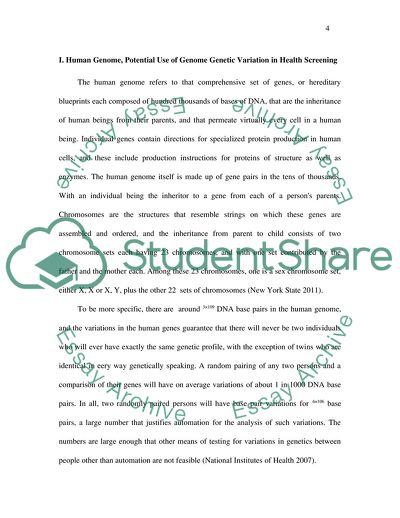Cite this document
(Human Genome, Potential Use of Genome Genetic Variation in Health Screening Essay Example | Topics and Well Written Essays - 1500 words - 21, n.d.)
Human Genome, Potential Use of Genome Genetic Variation in Health Screening Essay Example | Topics and Well Written Essays - 1500 words - 21. https://studentshare.org/biology/1812095-case-study
Human Genome, Potential Use of Genome Genetic Variation in Health Screening Essay Example | Topics and Well Written Essays - 1500 words - 21. https://studentshare.org/biology/1812095-case-study
(Human Genome, Potential Use of Genome Genetic Variation in Health Screening Essay Example | Topics and Well Written Essays - 1500 Words - 21)
Human Genome, Potential Use of Genome Genetic Variation in Health Screening Essay Example | Topics and Well Written Essays - 1500 Words - 21. https://studentshare.org/biology/1812095-case-study.
Human Genome, Potential Use of Genome Genetic Variation in Health Screening Essay Example | Topics and Well Written Essays - 1500 Words - 21. https://studentshare.org/biology/1812095-case-study.
“Human Genome, Potential Use of Genome Genetic Variation in Health Screening Essay Example | Topics and Well Written Essays - 1500 Words - 21”. https://studentshare.org/biology/1812095-case-study.


